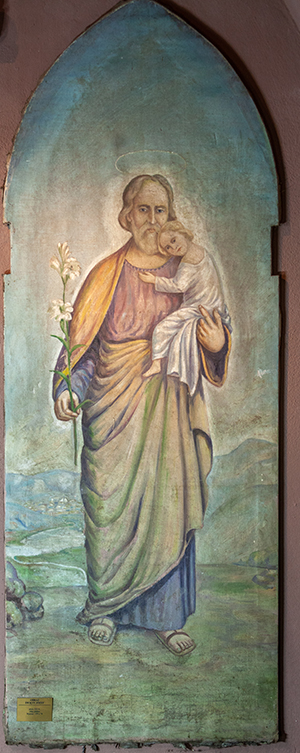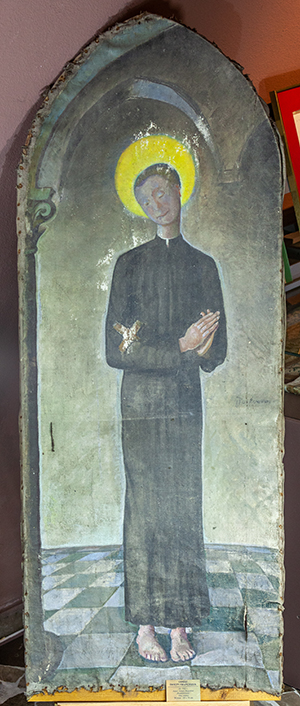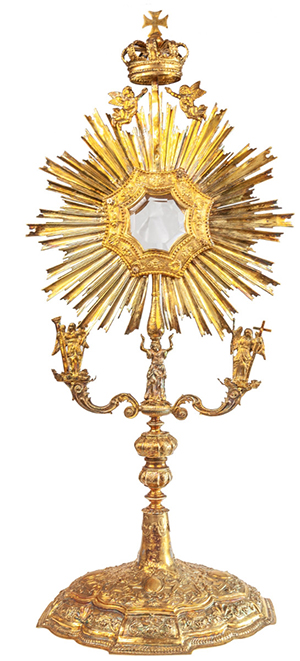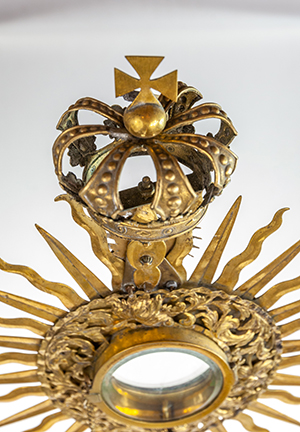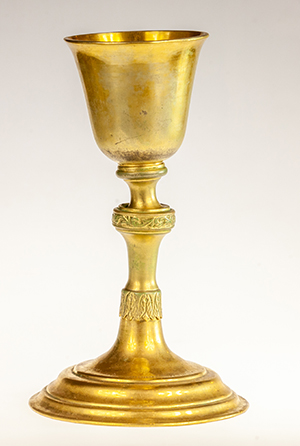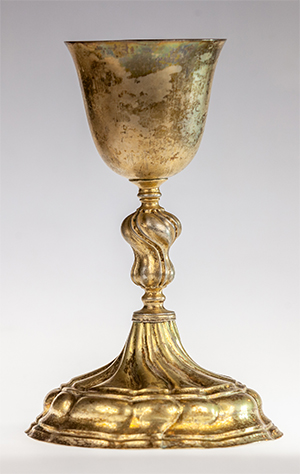Monuments
Picture of Saint Joseph is in the museum under the chapel. The exposition is located in the lower tier of the castle church built in the 14th century. The upper tier (rebuilt several times) is the chapel of the Holy Mother of Kębło. The museum was established in 1995 on the initiative of the Board of the Society of Friends of Wąwolnica and the contemporary parish priest Jan Pęzioł.
Style: post-impressionism. Material and technique: canvas, oil paint
The Catholic Church recognizes Saint Joseph as a paragon of virtue due to his devotion to God, his faith, diligence, bravery, justice, purity and modesty. Saint Joseph is a model of bravery. There are many publications regarding his life and even research facilities specializing in study of josephology that is theological reflections on the subject of Saint Joseph.
In Poland operates Polish Josephological Study Center in Kalisz and the Saint Mary Basilica in Kalisz is the national sanctuary of Saint Joseph. The 10th International Josephology Congress took place in 2009, also in Kalisz. As a biblical character Saint Joseph is the capstone of the Old Testament. He is completely devoted to God’s will. As the head of the Holy Family of Nazareth he was endowed with grace and trust by God that was shown by entrusting him with care of Mary and Jesus - the Son of God. This is why the Catholic Church consider Saint Joseph to be an exceptional character, worth the cult that is around him. Saint Joseph is also portrayed by the Church as the vanquisher of hell spirits.
The picture of Saint Joseph is in the museum in Wąwolnica and it measures 199 cm (height) by 74 cm (width).
Picture of saint Francis is located in the museum under the chapel. The exposition is located in the lower tier of the castle church built in the 14th century. The upper tier (rebuilt several times) is the chapel of the Holy Mother of Kębło. The museum was established in 1995 on the initiative of the Board of the Society of Friends of Wąwolnica and the contemporary parish priest Jan Pęzioł.
Style: formism. Material and technique: canvas, oil paint
In 1979 John Paul II declared Saint Francis the patron of ecologists and ecology.
In 1981 in Krakow the Franciscans founded Ecological Movement of St. Francis of Assisi that holds numerous educational and pro ecological programs.
On 13 th March 2013 St. Francis became the patron of Jorge Maria Bergoglio, who was the first in history to take the name Francis after being chosen as the Pope. The Catholic Church celebrate the memory of St. Francis on 4th October. Francis of Assisi was declared Saint on 16th July 1228 by his friend, Pope Gregory IX (previously cardinal Ugolino).
Convex base embossed with regency ornament. The base’ edge with slanted scrolls. Ribbed plinth consists of several segments. On top of the conical ended base there are four round cartouches among leaves of acanthus and campanula. Smooth cone of the base ended with round lambrequin. Pear shaped nodus.
Oval base with scalloped edge and convex, embellished top ended conically. Cone ended with a round lambrequin. Pear shaped nodus with stones and a ring. Stem ended with baluster that is embellished from the bottom with a wreath of lanceolate leaves. The sun in the halo of alternating straight and wavy beams. A royal crown at the top. Lunette composed of rings. The front ring embossed with a scroll intertwined with grape leaves. On the ring there are six mountain crystals and below a cabochon of yellow glass /topaz/.
Above the ring is a torso of God the Father. On the other side of the sun is an embossed openwork motif of acanthus leaves.
The top of the base is embellished with a vine and four flowers. At the reverse side of the plaque engraved “Remont 1970”
Style: baroque
Material and technique: embossed silver, gold-plated
Style: classicism. Material and technique: brass, silver plated
Engraving at the top of the base: “Memento anime Stanislai Sacerdotis + die 20 Juni A.D. 1864”
Base with scalloped edge, pear shaped nodus. Semi-oval bowl with flared edge, smooth. Spiral twisted nodus with vertical groves. Base with separated plinth with four slightly twisted groves. Paten Ø concave with engraving of an isosceles cross in a wreath. Paten stamped with “CE” Mark from 1806 - 1807.
Style: baroque
Material and technique: embossed silver, gold-plated, partially casted
Subcategories
Page 7 of 14









